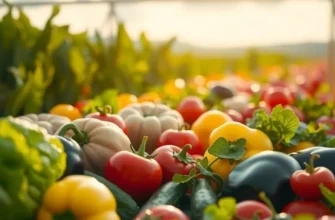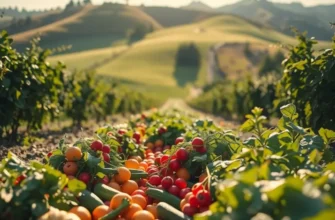Boiling is one of the most fundamental cooking techniques, and mastering it can elevate your culinary creations significantly. Whether you’re preparing pasta, vegetables, or even eggs, understanding efficient boiling methods can save time and enhance flavors. This guide provides practical tips and techniques that home cooks at any skill level can use to become more confident and efficient in the kitchen.
The Foundations of Boiling: Techniques and Tips

Boiling is a fundamental cooking technique that seems straightforward yet holds subtle complexities. Mastering it requires understanding key elements like water temperature, lid usage, and ingredient preparation.
The first step in boiling effectively is grasping the importance of water temperature. Bringing water to a rolling boil involves heating it to its highest point, around 212°F (100°C) at sea level. This temperature is ideal for cooking foods like pasta and hard vegetables. On the other hand, a gentle simmer (just below boiling) is better for delicate items like eggs or fish, where a harsh boil may damage the texture or integrity of the food.
Maintaining control over your water’s heat is crucial. A well-functioning stove and thermometer can help you reach and maintain the ideal temperature for your ingredients. For those interested in low-waste cooking practices, keeping a lid on your pot can boost efficiency by trapping heat and speeding up the boiling process. This method not only saves time but also conserves energy, aligning with eco-smart kitchen techniques (read more).
Preparation of ingredients is another pivotal aspect. Cutting ingredients to uniform sizes ensures even cooking, which is particularly significant for achieving optimal texture and doneness. While some foods demand larger cuts to maintain shape during aggressive boiling, others require uniform slices to cook thoroughly and evenly.
Being mindful of the timing and sequence is another technique to elevate boiling efficiency. Some ingredients benefit from being added to already boiling water, which helps seal in flavors and nutrients. Conversely, foods that might release starch, like pasta or rice, are often added to the pot before the water reaches a full boil to prevent clumping and promote even cooking.
Additionally, the type of water you use can make a difference. Tap water, often containing minerals, can affect the taste of the boiled food. For specific delicate recipes, using distilled or filtered water can help maintain a dish’s intended flavor profile.
Incorporating these foundational techniques into your boiling routine will streamline your cooking process, ensuring precision while maximizing flavor and texture. With practice, boiling can transform from a simple task to a proficient skill in any home cook’s repertoire.
Advanced Boiling Strategies: Upscaling Your Cooking Game

Unlocking the potential of boiling goes beyond simply heating water to its bubbling point. For those looking to refine their culinary craft, mastering advanced methods such as blanching for vivid colors and infusing flavors into boiling water can dramatically elevate your dishes.
Blanching is a technique that can transform the appearance and quality of vegetables. This method involves briefly boiling your vegetables before quickly cooling them in ice water. The result is a vivid, bright hue and a crisp texture. Begin by bringing a large pot of salted water to a rolling boil; this ensures that your vegetables are seasoned while they cook. Once the water reaches its peak, add the vegetables for a brief encounter with the boiling water—say one to two minutes—then immediately transfer them into an ice water bath. This rapid cooling halts the cooking process, locking in color and ensuring your veggies maintain their crunchy texture.
Beyond preserving aesthetics, blanching also offers practical benefits. It aids in peeling skins off fruits like tomatoes or peaches and prepares vegetables for freezing, helping them retain nutrients longer. Moreover, this method can reduce bitterness in certain greens, making them more palatable.
Enhancing the water you boil in is another subtle way to boost flavor in your dishes. Water as a flavor carrier is an undervalued concept. Start by considering the final dish in mind—what are the predominant flavors, and how can they be accentuated? If you’re preparing pasta for a Mediterranean dish, adding aromatic herbs such as bay leaves or thyme to the boiling water can add a whisper of these flavors into the pasta itself. For grains, replacing water with broth or adding spices like cinnamon sticks or star anise elevates the dish’s aroma and depth.
Moreover, think about the application of flavored water in everyday cooking beyond pasta. Steaming seafood with wine-infused water or boiling potatoes with garlic and rosemary ensures even the simplest components of your dish carry complexity and nuance. For those interested in diving deeper into flavor without relying heavily on salt, exploring alternative flavor boosters without the sodium is an excellent strategy.
Another essential element in optimizing boiling techniques involves understanding timings for different ingredients—mastering timing elevates both taste and texture. Each ingredient has an optimal boiling span. For example, different rice varieties require unique timing and water ratios, affecting the outcome substantially. Understanding these specifics can result in perfectly fluffy rice or al dente pasta with every attempt.
A dedicated home cook can truly take boiling from a routine task to an art form by experimenting with flavors, improving existing techniques, and trying new ones. As you refine these strategies, you’ll not only impress with vibrant presentations but also enjoy the encompassing balance of aroma and taste in your culinary masterpieces.
Final words
Understanding efficient boiling methods not only simplifies your kitchen experience but also enhances the flavors and textures of your food. By taking time to master the basics of boiling and exploring more advanced techniques, you’ll inevitably become a more confident home cook. Remember, practice makes perfect, and every pot filled with boiling water is an opportunity to improve your culinary skills. Enjoy the journey of learning and creating scrumptious meals with these easy, effective methods.







